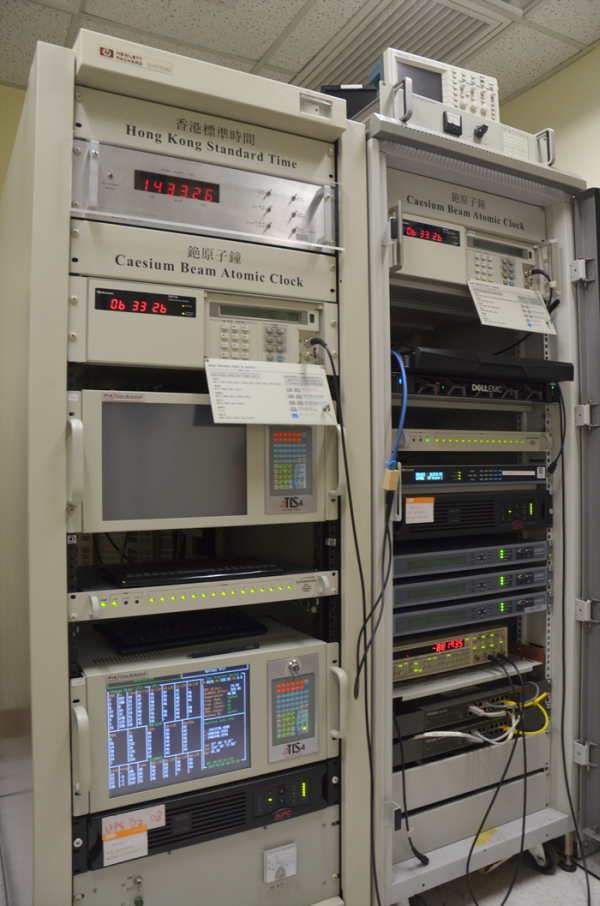Network Time Service – Past and Future
Network Time Service – Past and Future
CHEE Shiu-chung
April 2022
Accurate time is important to people especially to those who value every second. For specific industries or users, a stable and accurate time signal source is essential. Many network services also need an accurate time source running in the background in order to maintain normal operation.
Time service has been one of the main duties of the Observatory since its establishment in 1883. The technology of time keeping and dissemination has been evolving over the years. In the early days, the Observatory used transit instrument which consisted of a small telescope with precise measurement used for astronomical observations to determine the time. Subsequently, pendulum clocks and quartz clocks were used successively in different years, and since 1980 Caesium beam atomic clocks were used as the time and frequency standard. As for the means of dissemination of time information, the Observatory made use of time ball at the very beginning, and also radio broadcast subsequently, followed by the launch of the Network Time Protocol server in 1999 to provide time service.
1980 marked a significant milestone of time service in Hong Kong. The Observatory began to use Caesium beam atomic clock as the primary frequency standard for time keeping. The resonance frequency of the stable Caesium isotope Cs-133 atom is used to derive one second and give the standard measure of time. The accuracy of the time measurement is kept within 0.01 millionth second, i.e. 0.01 microsecond, or 10-8 second a day. The Observatory also employs the Global Positioning System common-view method to submit time information of HKO's atomic clock to the Bureau international des poids et measures (BIPM) for determination of Coordinated Universal Time (UTC).
What exactly is a network time service? The Observatory started to provide network time service by setting up a time server under the domain “stdtime.gov.hk” where network clients can synchronize their devices to Hong Kong Standard Time. In 2012 a new domain “time.hko.hk” was also launched to serve IPv6 users. Network clients can use these two domains to synchronize their network device clock through Network Time Protocol (NTP).
NTP is a common networking protocol. Network devices can use this protocol to synchronize their built-in clock to a specific network time server that provides accurate time. Depending on the network quality and speed, the accuracy can be down to a few milliseconds. NTP protocol has been widely used since its implementation in 1985.
With rapid technological advancement, services on the network has also been springing up like mushrooms. There has been increasing demand of network time service in recent years and the Observatory has upgraded network devices and network time servers. In 2021, more than 91 billion requests for the Observatory’s NTP time service were entertained. If you wish to know more about how to use this service, please visit the Observatory’s webpage for the Network Time Service.
With continuous development of Internet technology, the requests for network time service are expected to grow further. The Observatory will keep close watch on the latest development and strive to provide our community with accurate and reliable time service. In around mid-2022, the Observatory will update the domain name of the time servers to “stdtime.hko.gov.hk” and replace some time protocols being phased out to ensure efficient use of the available resources and further improve the efficiency of time service.

Figure 1 The Hong Kong Observatory Time Service System comprising Caesium beam atomic clocks (top left: primary Caesium clock; top right: backup Caesium clock; bottom right: a number of network time servers).
References:
[1] NTP Project: https://www.ntp.org/index.html
[2] BIPM: Towards a new definition for the second
[1] NTP Project: https://www.ntp.org/index.html
[2] BIPM: Towards a new definition for the second